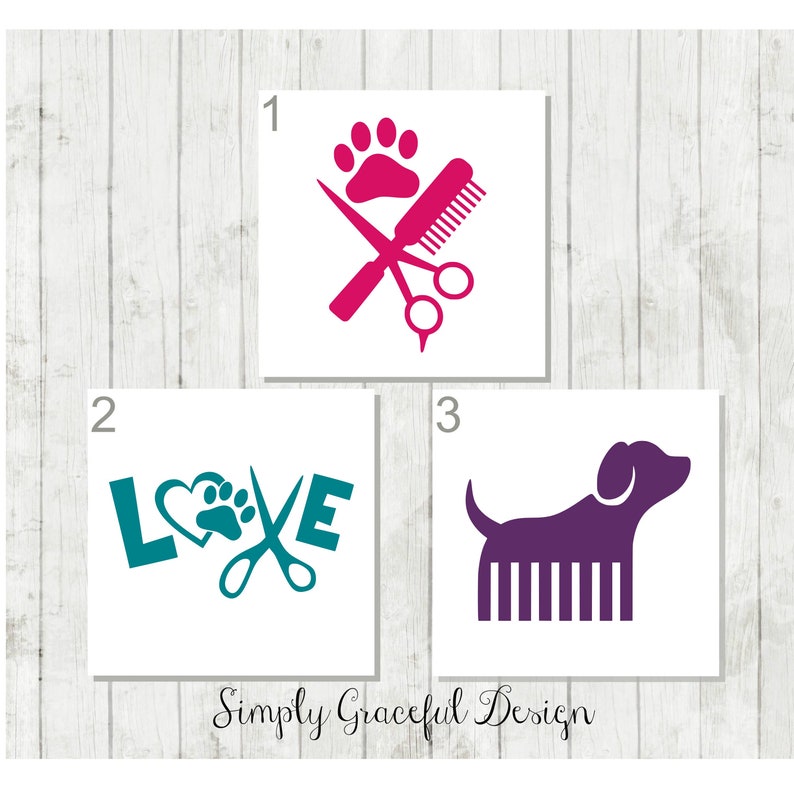Shih tzu haircuts groomers shihtzu groom shitzu tzus puppy kapsel boomer tailandfur gatto doghomeheaven care
Table of Contents
Table of Contents
Dog grooming is an essential part of taking care of your furry friend. It not only makes them look good, but it also keeps them healthy and comfortable. There are so many different dog grooming styles to choose from, and it can be overwhelming for pet owners. This guide will help you understand the different grooming styles available and choose the best one for your dog.
Pain Points
Many pet owners struggle with finding the right grooming style for their dog. Some may not know where to start or what styles are available, while others may have had bad experiences with previous groomers. Some dogs may also have specific grooming needs due to their breed or coat type, which can make finding the right groomer even more challenging.
Target of Dog Grooming Styles Guide
The target of this guide is to provide pet owners with a comprehensive understanding of dog grooming styles. This guide will help you choose a style that is suitable for your dog’s breed, coat type, and personality. We will also provide tips on how to find a reputable groomer and maintain your pet’s grooming needs at home.
Summary of Main Points
In this guide, we’ve covered a range of topics related to dog grooming styles guide, including common pain points, the target of the guide, and how to choose the right grooming style for your dog. We’ve also shared personal experiences and tips on finding a reputable groomer and maintaining your dog’s grooming needs at home.
Different Dog Grooming Styles
One of the most popular dog grooming styles is the “puppy cut,” where the fur is trimmed all over the dog’s body to a uniform length. This style is easy to maintain and keeps your dog looking cute and cuddly. Another grooming style is the “teddy bear cut,” which gives your dog a fluffy, rounded appearance.
 If you’re looking for something more creative, consider a “lion cut” for your dog. This cut involves shaving the body fur short and leaving a mane around the dog’s head and neck, creating the appearance of a lion. Other popular grooming styles include the “schnauzer cut,” the “westie cut,” and the “poodle cut.”
If you’re looking for something more creative, consider a “lion cut” for your dog. This cut involves shaving the body fur short and leaving a mane around the dog’s head and neck, creating the appearance of a lion. Other popular grooming styles include the “schnauzer cut,” the “westie cut,” and the “poodle cut.”
Choosing the Right Groomer
When choosing a groomer, it’s important to do your research. Look for a groomer who has experience with your dog’s breed and coat type. Ask for referrals from friends and family, and check online reviews. When you find a groomer you like, schedule a consultation before the first grooming appointment to discuss your dog’s needs and any concerns you may have.
 Grooming at Home
Grooming at Home
Maintaining your dog’s groomed appearance between appointments is essential, and it’s easy to do at home. Brush your dog’s fur regularly to prevent matting, and trim their nails every four to six weeks. Bathing your dog is also necessary to keep them clean, but be careful not to bathe them too often as it can dry out their skin.
Importance of Regular Grooming
Regular grooming is essential for keeping your dog healthy and happy. Grooming helps to prevent matting, which can lead to skin irritation and infection. It also reduces the risk of parasites and helps to maintain your dog’s body temperature. Plus, a well-groomed dog just looks and smells better!
Professional Grooming vs. DIY
While it’s possible to groom your dog at home, it may be more challenging for certain breeds or coat types. Professional groomers have the skills and equipment needed to provide a thorough groom that will keep your dog comfortable and looking their best. However, if you prefer to groom your dog at home, there are plenty of resources available that can help you learn how to do it safely and effectively.
FAQs
1. How often should I groom my dog?
The frequency of grooming depends on your dog’s breed and coat type. Typically, dogs with longer hair require more frequent grooming than those with shorter hair. Ask your groomer or veterinarian for advice on how often to groom your dog.
2. How can I find a good groomer?
Ask for referrals from friends and family, and check online reviews. When you find a groomer you like, schedule a consultation before the first grooming appointment to discuss your dog’s needs and any concerns you may have.
3. What should I do if my dog doesn’t like being groomed?
If your dog doesn’t like being groomed, try to make the process as comfortable as possible. Use treats and positive reinforcement to build a positive association with grooming. Consider using a professional groomer who can work with your dog’s individual needs.
4. Is it okay to shave my dog’s coat?
Shaving your dog’s coat is okay in some cases, such as when the coat is severely matted or if your dog is prone to overheating. However, shaving can be dangerous for certain breeds or coat types. Consult with your veterinarian or groomer before shaving your dog’s coat.
Conclusion of Dog Grooming Styles Guide
Dog grooming is an essential part of owning a pet, and finding the right grooming style for your dog can be a fun and rewarding experience. By understanding the different grooming styles available and choosing the right groomer, you can ensure that your furry friend looks and feels their best.
Gallery
30 Different Dog Grooming Styles - Page 2 Of 2 - Tail And Fur

Photo Credit by: bing.com / shih tzu haircuts groomers shihtzu groom shitzu tzus puppy kapsel boomer tailandfur gatto doghomeheaven care
7 Dog Grooming Tips To Keep Your Dog Looking Great | Dog Grooming Tips | Best Dog Grooming Ti

Photo Credit by: bing.com / englishbulldog pw
30 Different Dog Grooming Styles - Tail And Fur

Photo Credit by: bing.com / grooming dog styles color petsmart different pet chalking dogs maltese salon local available malteser fur style feather creative colors pets
30 Different Dog Grooming Styles - Page 2 Of 2 - Tail And Fur

Photo Credit by: bing.com /
Japanese Grooming | Toy Poodle Haircut, Poodle Puppy, Dog Grooming Styles

Photo Credit by: bing.com / poodle






